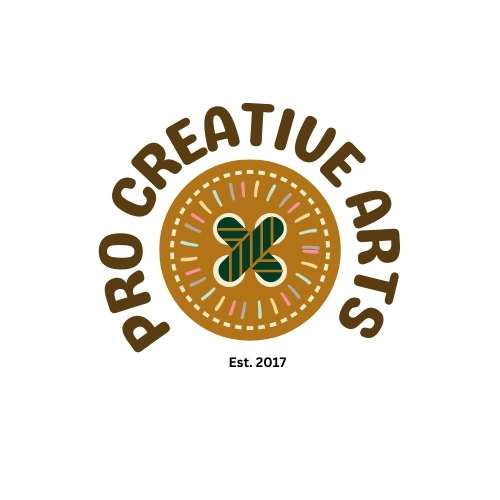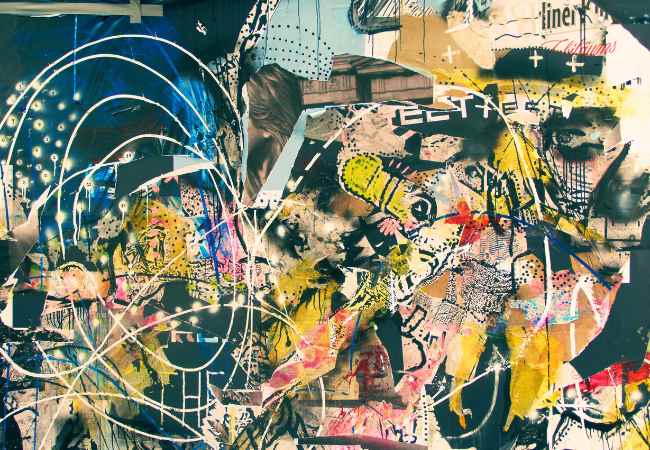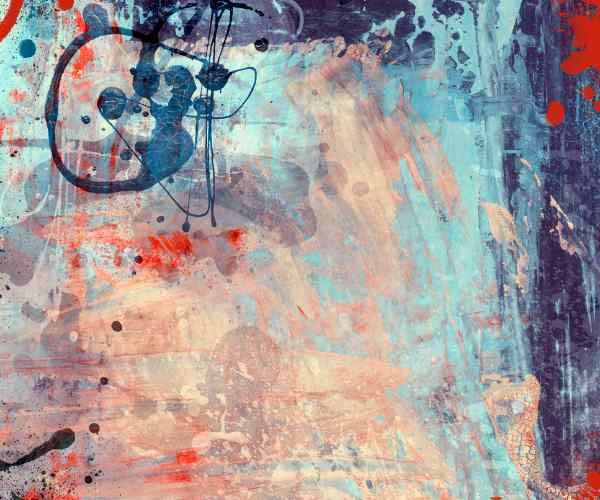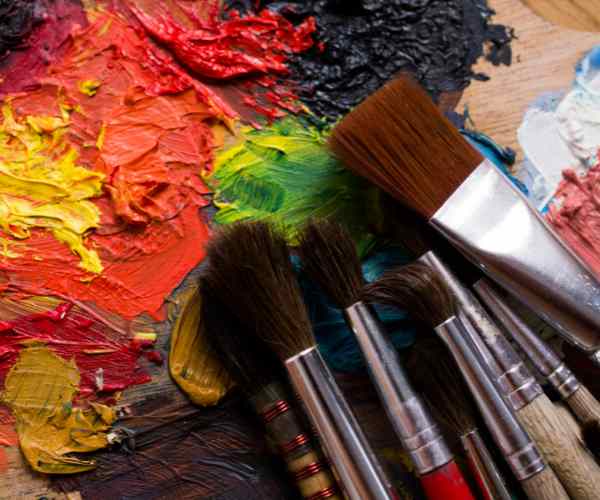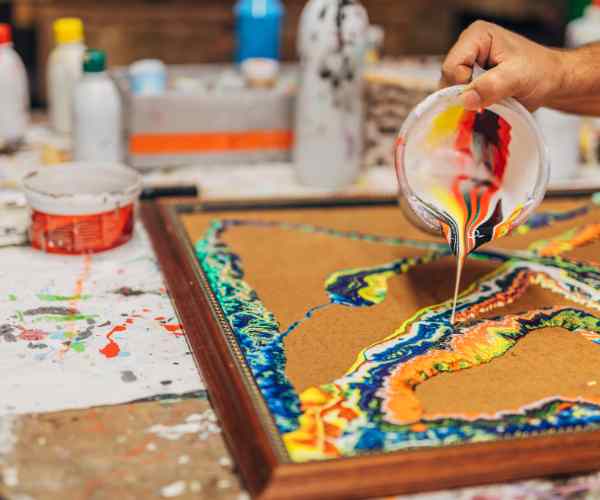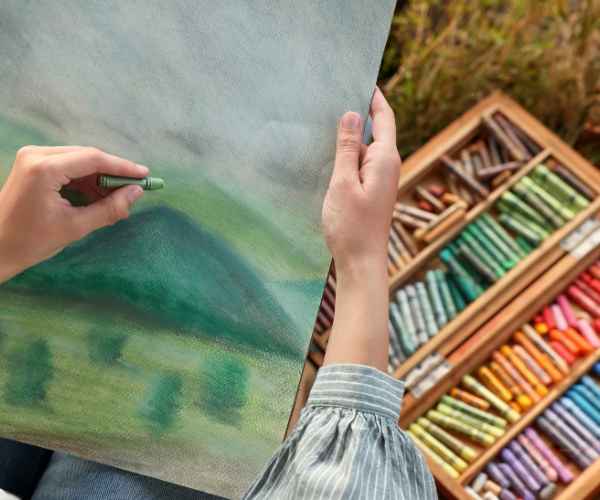There is something wonderfully captivating about the brush strokes you master as an artist. Be it your first time even picking up a brush for the first time, or you have been doing it for years, For painting, it’s as if you’ve found your distinctive signature that is solely yours, and fittingly so, a means to show off your creativity.
Brush control was one thing that I struggled with the most during the early phases of my painting hobby, and this was also because blending colors was nearly an impossible task for me. My lines ended up looking a bit thick or rather wobbly, but that shouldn’t of matter to me because it did not matter about what tools I used, but rather how I utilized them and the brush’s rest of the work.
The language of a painting by no surprise is in the brush strokes, as they serve to be the means through which an artist articulates emotions, depth, and texture on the blank canvas. Each stroke of traditional Chinese calligraphy was practiced for centuries which lends an artist a cadence, and stroke that gives rhythm. Alternatively, the ever so loose and dreamy brush strokes of Impressionist paintings emulate light and color in a manner that no other technique can, while also giving a sense of fluidity.
In this guide, we’re going to discuss brush strokes techniques step by step from the beginner levels and finally achieving advanced levels. We’ll deal with basic strokes, their effective use on canvas and paper and also I’ll provide you with those expert tips which can help you to achieve more brush control. Trust me, by the time we’re done with this section, I am sure you’ll feel a bit more confident with the brushwork that embodies your creative aesthetic.
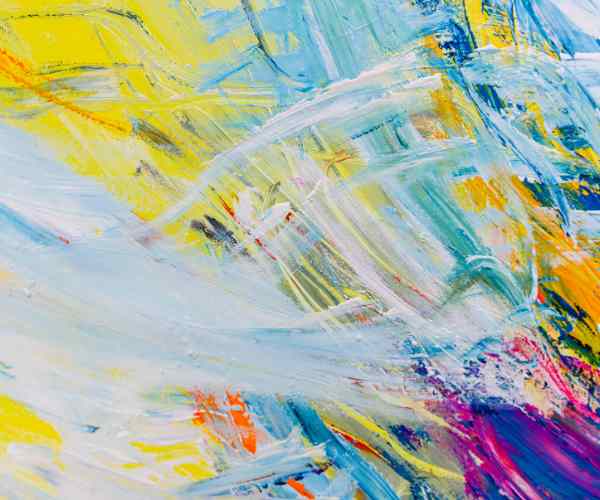
Mastering the Basics of Brush Strokes: Techniques You Need to Know
Let’s stop for a moment and clarify crucial beginner painting techniques, an understanding of which will also help you develop your own unique style, no matter whether you are working with watercolor, oil, or acrylics.
It is safe to say that no one walks blindly into a painting class, but there are expectations. For example, I never knew that the type of brush I used in painting would matter. After for instance purchasing an artistic brush, I used to be the kind of artist who thought any kind of brush did the job, boy was I wrong! And it turns out that each brush has a distinct style of applying paint on the canvas. All I needed to do was learn how to manipulate them and I was set! With the right connection, those can produce interesting effects that help me communicate my message.
Key Brush Stroke Techniques for Beginners
Let’s look at some brush stroke techniques that every beginner should master:
Flat brush strokes: Again, these are always your bread and butter, and especially if you have wide areas to paint. I don’t know, but for me picturing a sunset, at a conceptual level, makes it easy to understand. Long flat opacity brush strokes over large areas provides efficient but elegance, this lightens up once laid the bold base of the painting.
Round brush strokes: Some of the particulars come together in this step. With the use of round brush, you are tasked with fine line work and detailing. I use this a lot when I’m working on detailing a painting, such as adding veins on a leaf or animal’s fur. It can also be used to create shapes such as spirals in a more gentle manner.
Fan brush: The underrated blending tool! If you ever had a problem with two bold colors that needed to merge, you can use the fan brush as it is perfect for making soft transitions. This definition is so soft because it blends colors at the edges and also done to change the surface of a piece. I remember how I experimented with a fan brush to blend a cloudy sky and it did a great job with creating a soft natural gradient.
Fine, thick, hot, round, warm, and everything in between. These thin layers of paint contrast each other everywhere. For example when I want a more textured look in a painting the impasto stroke with a flat brush can make lines that are heavy and sculptured, thick. But on the other hand, a simple, light, airy or simply a watercolor wash needs a gentle round brush to flow and bring out the transparency of the medium.
Selecting the Perfect Brush for Your Paintings
When I very first picked up a paintbrush, I remember thinking anyone who wanted to paint could just use any brush as all of them felt identical to me at that time. I would use whatever was available to me and just paint. The more I developed my art skills, the more I came to understand the importance of a brush’s type and how crucial it was in anchoring the painting. Every painter knows the right brush is nothing short of a magic wand that allows one to create as precisely as possible while the wrong brush can result in a smear and failing to achieve the goal. Furthermore even with a good brush poor strategy or terrible painting techniques are greatly limited; thus optimizing a brush’s usage is vital.
When it comes to painting whether on a canvas or a paper, every artist knows the interaction of the brush with the medium is imperative. The results a brush can achieve and the characteristics it has such as its softness, shape, its material, and even the bristles are everything when it comes to creating artwork whether it’s a stunning oil painting, or super thick layered water color.
Choosing Between natural vs synthetic brushes
Depending on what kind of artwork you are trying to achieve, the debate of natural versus synthetic brushes remains but can be put to rest as both come with advantages.
Natural hair brushes allow a smooth transition to blend painting styles on the canvas of a watercolor or an oil painting seamlessly. Stiff hairs made from sable and hog for these brushes give a seamless flow of color while keeping the fluidity intact. Using these brushes will ensure to achieve a soft yet romantic feel over the portrait or even standing landscapes.
Now, when combining acrylic paint, providing intricate details or embedding elegant patterns may require a synthetic brush. Ideal for a graphic piece that needs to have sharply controlled edges. Synthetic brushes are more precise in terms of detailing and are stronger while holding their shape ensuring smooth line strokes.
Why You Should Consider Regular Brush Maintenance
Hey, Let me share my personal experience, Paint Removers is not the only aspect that requires attention, Brush maintenance is equally of importance.
During one of my painting sessions, I went ahead and put my favourite natural paint brush into water as I was completely exhausted after the long session. I woke up the next morning to my brush completely split apart along with its bristles. Safe to say, I learned my lesson.
If done properly, proper care for brushes can ensure durability along with maintaining performance, This can be done by ensuring a deep and thorough cleaning after each use, regardless of whether it is a natural or synthetic use paint brush, Especially, when using a natural brush as they tend to absorb paint as well.
Paint that has dried up can expand the bristles, making the strokes stiff and therefore obliterating the control you have over your brush. I suggest using a brush cleaning solution especially if you work with oil paints, as those tend to dry up and are harder to clean. First give your brushes a rinse with the solution and follow it up with soap and lukewarm water.
Always remember, maintaining good brushes can save you tons of time and effort in the future. Ever heard the saying “a workman is only as good as his tools” Well, I stand by that wholeheartedly.
Art Styles and their Brush Stroke Methods
Brush strokes remain one of the most captivating features that cut across different art styles. Monet and his contemporaries painted in a totally different manner than painters of the earlier time. In every stroke of their paintings, they tried to capture the true essence within a free and abstract context. This holds a firm high because it displays a fine level of curiosity in an artist as predominant regions think otherwise.
Impressionism and loose brush strokes
Monet and Degas were renowned Impressionists who were known for their loose soft strokes. People claim that their detail and emphasis was far too loose without any control on the painting itself. At times even when I look at it, it appears to be a reflection of light or deep water. The finesse within the painting appears more controlled.
The indifference to paint colors complemented the painting in ways that touch created a painting that was far greater than just rich color hues. Using flat brushes further created a soft edge that allowed easier blending and hiding of details. This in turn invokes a slight surreal yet dream like effect, ensuring that the viewer’s focus remains still.
China: Brush Painting and Calligraphy
Chinese brush painting is another form of painting art where every line is made with intention. The brush becomes part of the painter’s hand, and monet’s communication includes not only the shapes but also the movements.
In contrast to Chinese calligraphy and painting, where the paint is used, some of its basic strokes, for instance, vertical strokes or leaf shapes, are their constituent elements, in my Association with their work, in fact, these strokes are very easy to learn, but to grasp it has to practice for many years. However, I’ve attended a workshop on Chinese brush painting once and I was so impressed by the sheer power and emotions these apparently primitive brush strokes were capable of conveying. It is about control and comprehension of the right proportions and relationships betweens ink, water and pressure applied to the brush. Every stroke has a purpose and once again, there is no time for any delay.
Frequently Asked Questions. Issues Concerning Brush Stroke Techniques.
Q: What brush should I use as a beginner for practicing brush strokes?
A: As for practicing brush strokes, I suggest beginner artists to use the flat brush and the round brush however these two types are quite commonly utilized.
Q: How do I get a better grip on supplying my automatic controls with brush strokes?
A: Gaining brush control requires practice, so start with holding the brush at different angles, and applying varying levels of pressure. This helps you become familiar with how paint is applied to the canvas.
Q: Which appropriate brush stroke techniques are to be required for watercolor painting?
A: The two main types of basic techniques are the wet on wet technique and the dry brush technique. These serve to maintain the desired blending and flow of the pigments on the watercolor paper enabling soft washes as well as coarse-textured effects.
Q: In what ways do different painting mediums influence brush strokes?
A: Each medium acts differently, so for instance, oil paint has a thicker consistency which means it creates more texture and more visible brush marks while acrylic has almost the same fluidity but dries quickly and affects smoothing the strokes. Watercolor has a free flow and requires especially soft strokes to paint with accurately.
Conclusion
An artist can never fully perfect brush strokes as they can always be worked on. The same idea can also be applied to other artists styles too. Be it elegant detailed lines or thick impasto strokes, every single stroke contributes to your artistic expression. The more introverted you are and scared to try out different brushes and techniques, the more you will struggle with confidence.
Therefore, do not hesitate to explore with new things, pick your brush, experiment with styles, and relish the process of growing into a more confident and expressive artist.
